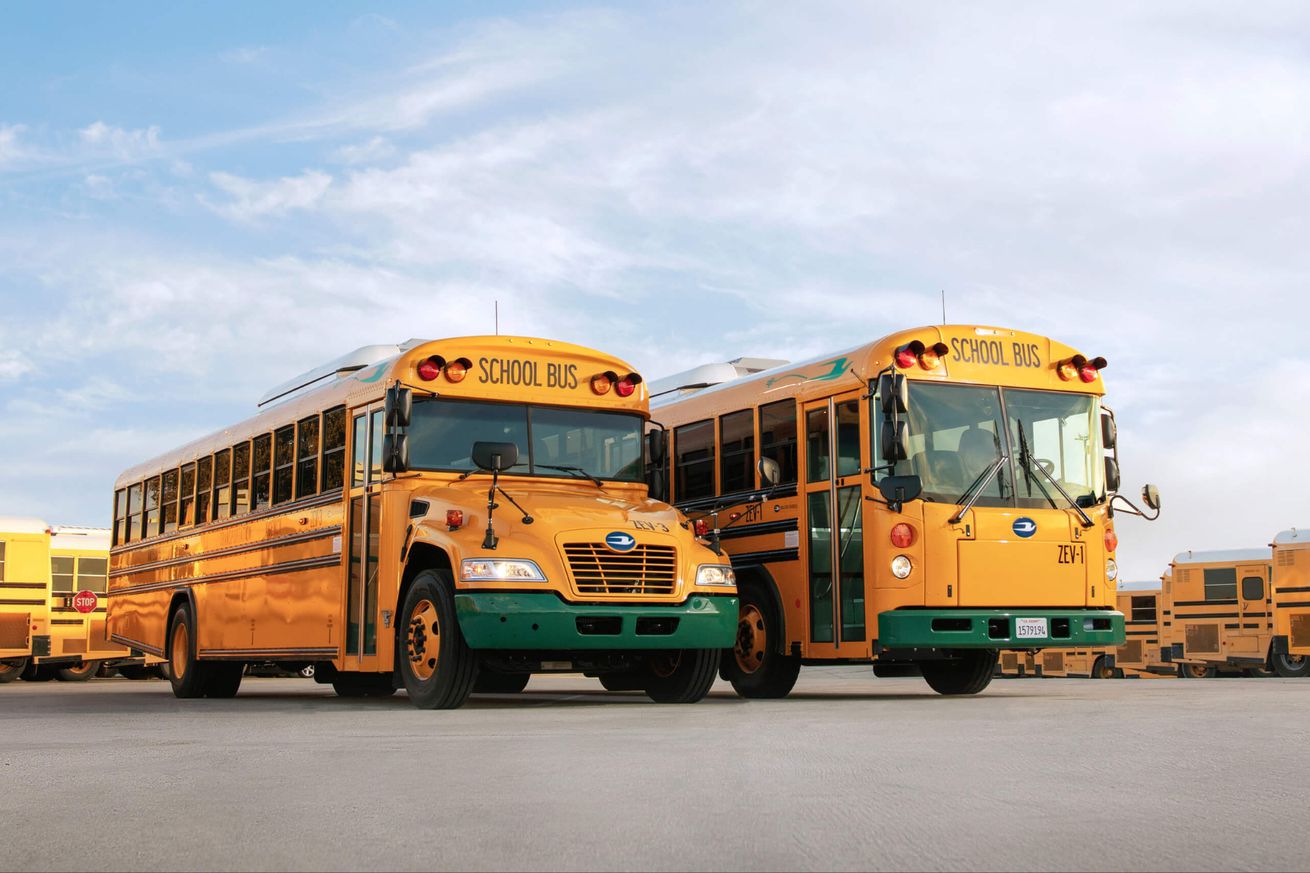
Iconic yellow school bus maker opens new electric bus factory
Blue Bird, a century-old manufacturer of America’s iconic yellow school buses, has opened a new production facility to meet the rising demand for electric school buses. Announced via a press release (and an adorable promotional video) on Thursday, a new 40,000 square foot “Electric Vehicle Build-Up Center” has been opened at Blue Bird’s main manufacturing plant in Fort Valley, Georgia, designed to increase the company’s production of electric school buses from 100 per year to 5,000.
Electric versions of Blue Bird’s “Vision” (a classic “Type C” bus with capacity for 77 passengers) and “All American” (a flat-fronted “Type D” bus for 84 passengers) buses will be assembled at the new facility, each equipped with a 155kWh battery that provides around 120 miles of range and takes between three to eight hours to recharge. There are nearly 1,000 Blue Bird electric buses currently in operation, making up six percent of the company’s total volume. The company currently builds four electric school buses each day, but hopes that its new EV facility will increase production to 20 buses a day.
Blue Bird is anticipating a significant increase in demand for electric school buses. School districts across the US and Canada have already begun replacing their traditionally powered bus fleets with all-electric models in a bid to reduce harmful greenhouse gas emissions, save on fuel costs, and improve the health of students. In the US especially, sales of electric school buses are expected to increase due to the billions of dollars in incentives available under President Biden’s infrastructure plan.
“Based on the historic Bipartisan Infrastructure Law alone we anticipate thousands of additional electric school bus orders valued at an estimated $1 billion over five years,” said Phil Horlock, president and CEO of Blue Bird Corporation. “Our new EV Build-up Center reflects Blue Bird’s steadfast commitment to school districts across the U.S. and Canada to meet increasing demand and deliver clean, safe, and reliable student transportation when they need it.”
Billions of dollars in incentives under Biden’s infrastructure plan are increasing the demand for all-electric school buses
School buses are an ideal candidate to transition away from traditional fuels like diesel (which now makes up less than half of Blue Bird’s volume). Besides preventing school children from being exposed to harmful emissions, the short, fixed route of school buses are well suited for range-limited EVs. They also have long periods outside of the twice-daily school runs where they’re not in operation, giving them plenty of time to recharge.
In the face of overwhelming demand, the Biden-Harris administration almost doubled the Environmental Protection Agency’s (EPA) cash pool for its Clean School Bus Program rebate last year from $500 million to $965 million. According to the EPA’s newly proposed greenhouse gas emissions standards for heavy-duty vehicles, the agency anticipates that 45 percent of all school buses produced by 2032 will be EVs.

